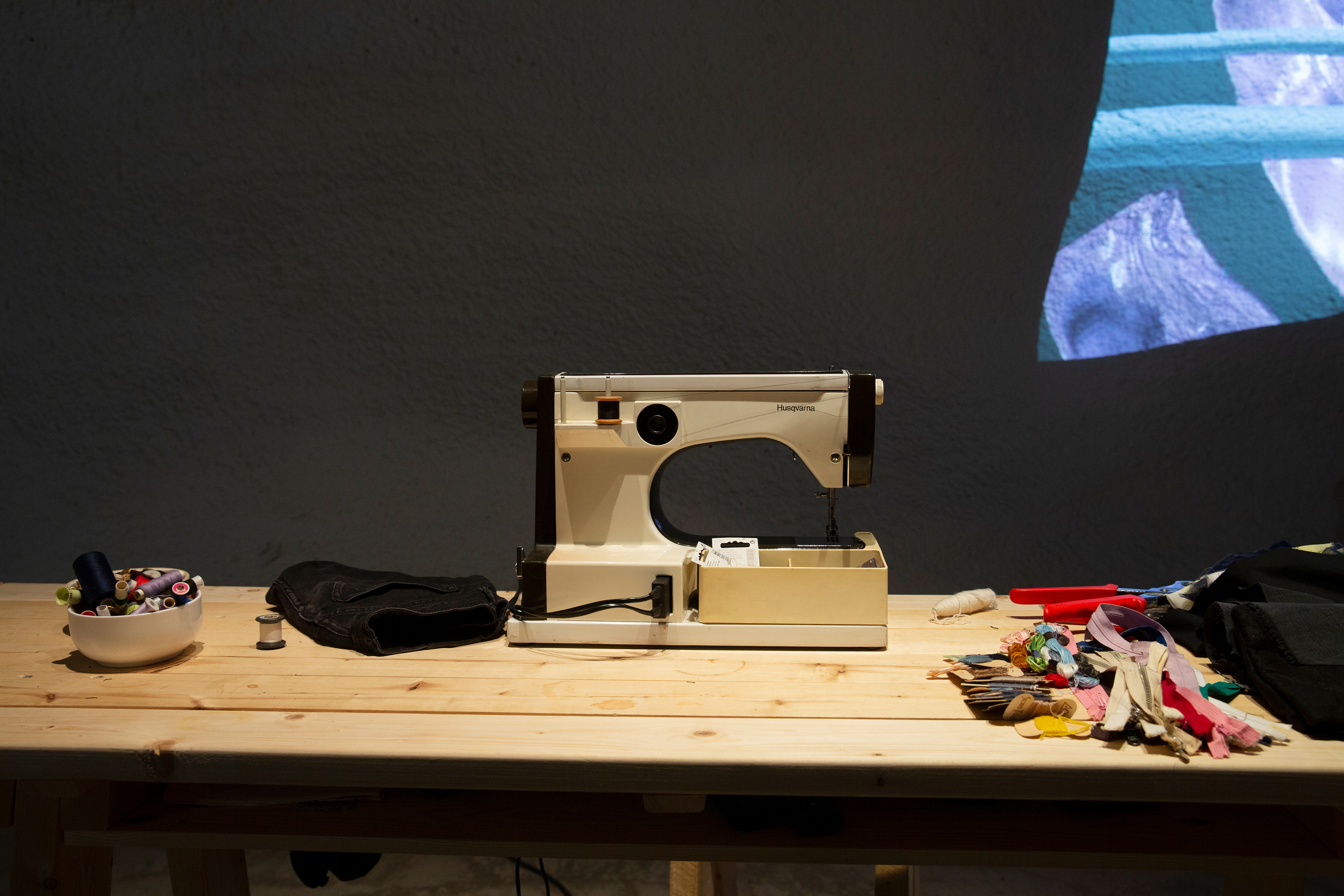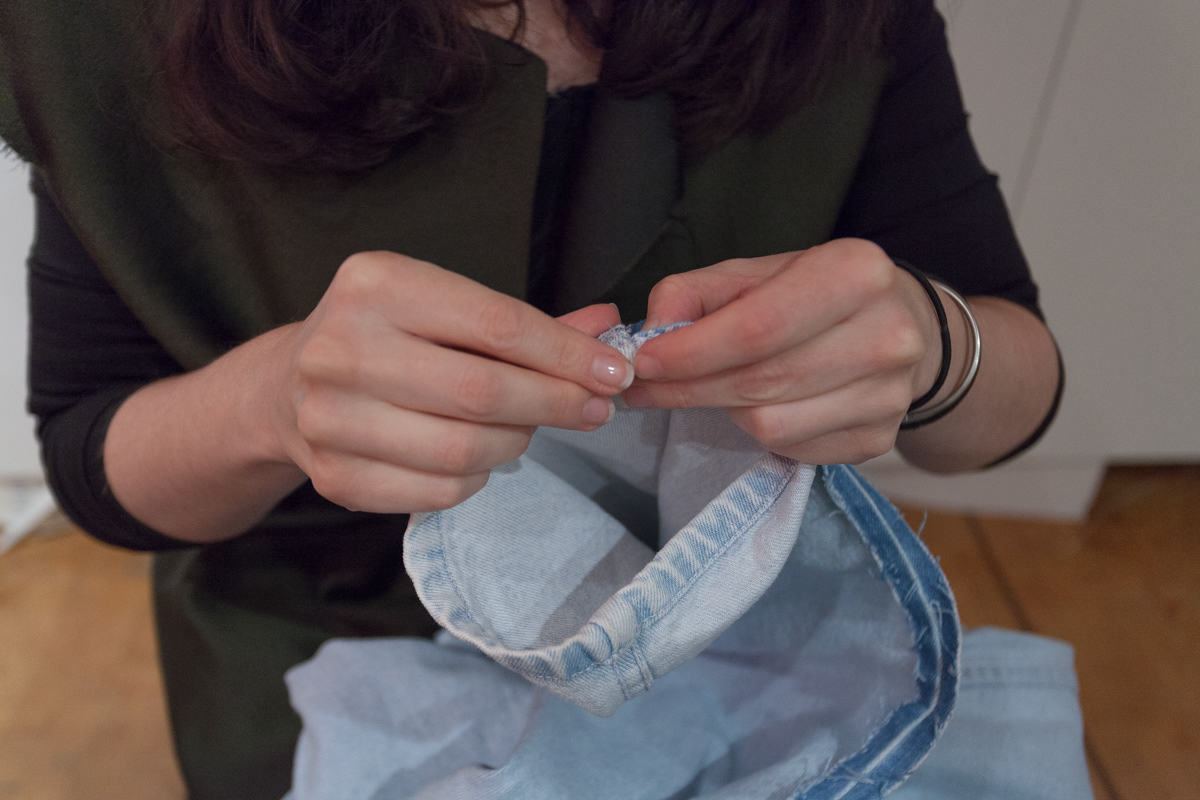
Design Museo 2017, Ph Jernej Čuček Gerbec
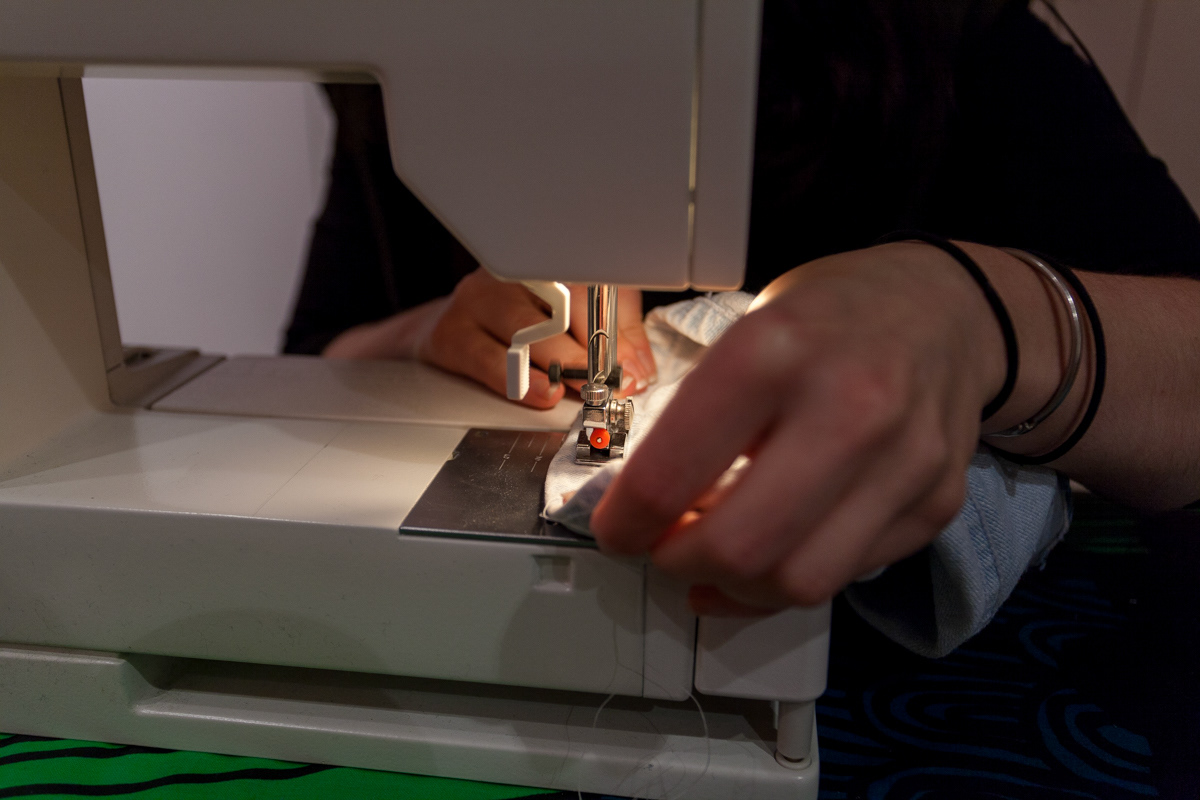
Design Museo 2017, Ph Jernej Čuček Gerbec

Design Museo 2017, Ph Jernej Čuček Gerbec
The Clothes Repair-a-thon is a repeating event held in the greater Helsinki area of which the purpose is to inform and engage the community about responsible consumption. The event is open to everyone, free of charge and the people participating are encouraged to bring their own clothes for repairing, mending or up-cycling. The repairs are made for free and there are also basic sewing lessons offered on-site.
It is not at first glance obvious how repairing can be acknowledged as an art form itself, as it used to be a widespread if not mundane and necessary household practice, so common to be nearly invisible.
Historically the value of clothing has decreased proportionally with its decrease in monetary value. A new assessment of the expense of our clothing in a world of mass produced garments, where you can find everything, but at the same time nothing, is of the outmost importance. The project envisions a new way of action where the buyer/consumer also becomes an active user, and the object in relation becomes an experience or the carrier thereof. The value here is not monetary anymore, and it would be simple to assume that in a world of cheaply available items monetary value matters anymore, but it becomes relational to the experience, emotional.
The [Boro] textiles encourage thoughtful assessment as well as aesthetic appreciation of the act of mending, the menders, and the mended objects…, resulted in a massive accumulation of time and memory of people who used the repaired and recycled objects. (Yoshiko Iwamoto Wada, “Boro Mottanai," Vestoj Journal, Issue 5 (2014): 83-85.)
As the Earth’s natural resources are depleting, the practice of repairing is here proposed as a new type of luxury, an added value which is brought on by the consumers themselves. We are giving new value to the torn clothing through devoting our time, patience, and experience to the mending, while chasing the elusive strive for authenticity in a world of mass production. It is as simple as stitching back a button, replacing a lining, hemming a pair of pants or patching a hole, to embed the clothing item with memories and meanings and making them valued objects again.
Visible mending reminds us of the materiality and the temporality of the thing. The delicate patchwork of repair is the narrative of its suffering and endurance. Each new darn declares the thing’s power; humans think it worth mending, it should not be thrown away. (Jonnet Middleton, “Long Live the Thing! Temporal Ubiquity in a Smart Vintage Ward-robe," Ubiquity: The Journal of Pervasive Media, 1:1, (2012): 7-22.)
The project was so-far presented through the Collective Intelligence working group at the Dimora OZ gallery (Palermo, 2017), at the Mediterranean Wefts museum (Gibellina, 2018) and at the Myymälä2 gallery (Helsinki, 2018). It has been further presented at the 'Alternative Modes of Fashion' (Aalto Learning Centre, Espoo, 2017), the 'Designmuseo goes Vaatevallankumous' (Design Museo, Helsinki, 2017), the 'Local and Decentralised' Pixelache Festival (Helsinki, 2017), the 'Art, Design and Repair' lecture series (Aalto University, Helsinki, 2018), as the 'Red Thread' performance with Claudia di Gangi and Giuseppe Lomeo (Interreg MED, Rome, 2018), at the 'Fashion Colloquium' (Arnhem, 2018) and the Shelter Festival (Helsinki 2019).
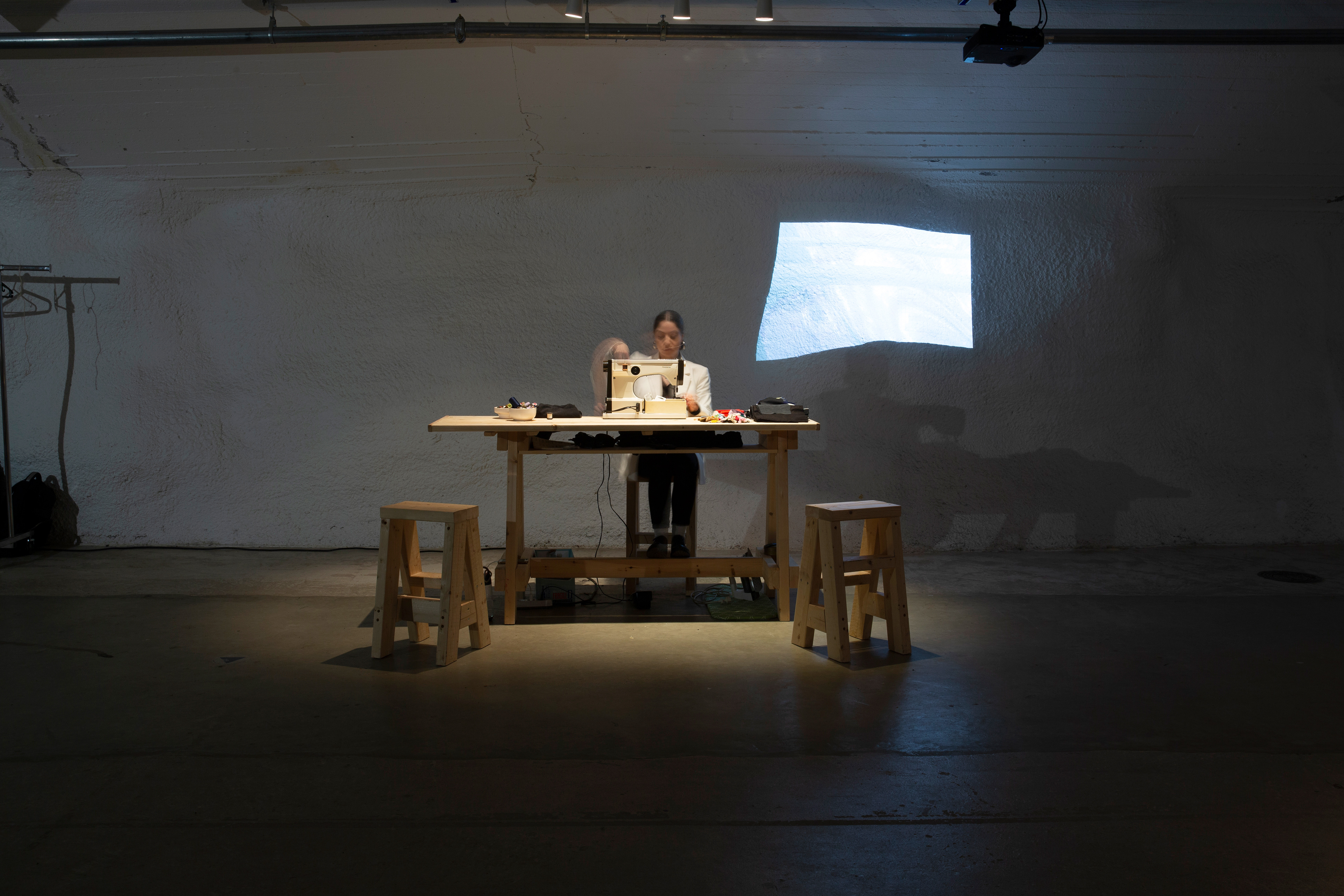
Shelter Festival 2019, Ph Samra Šabanović
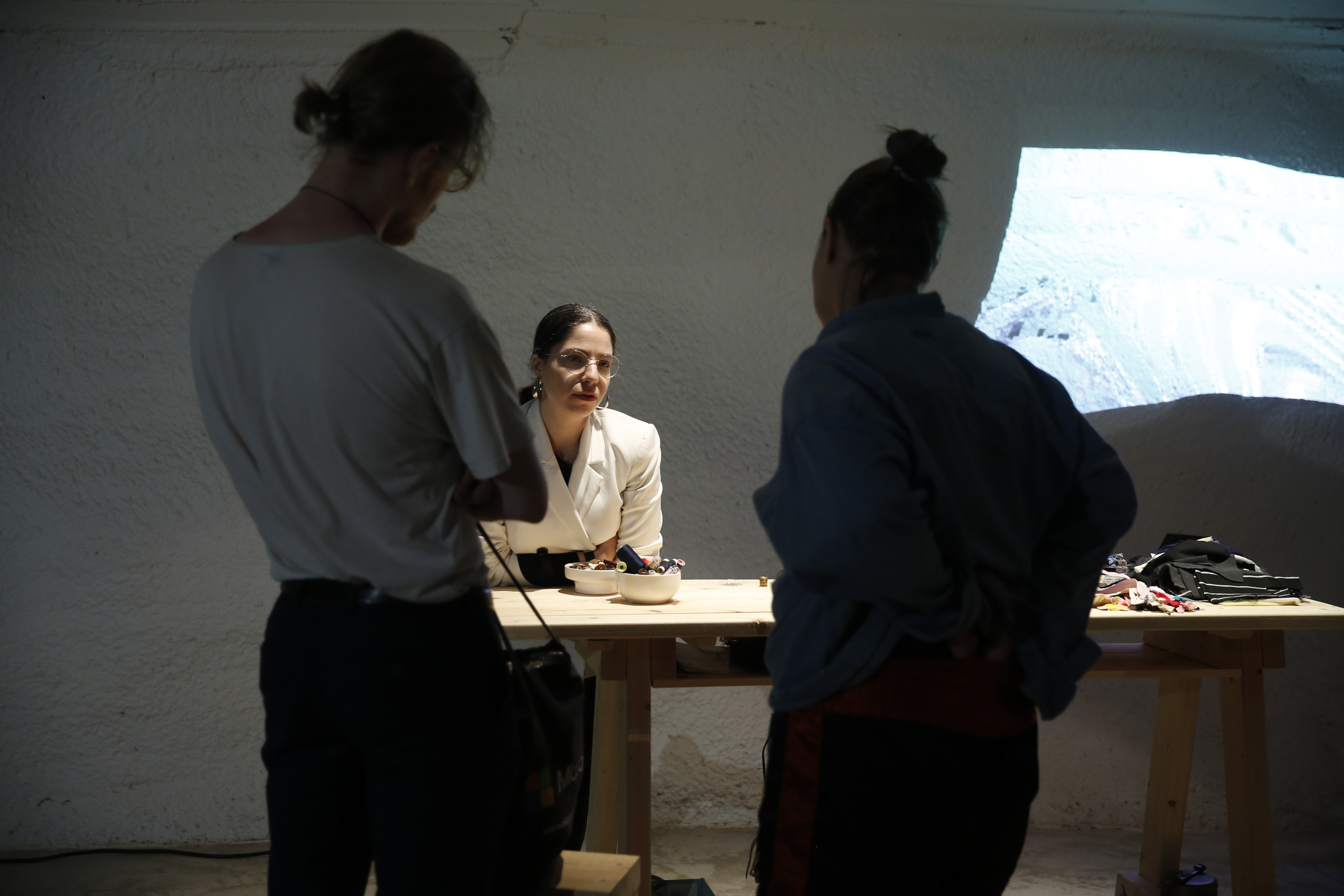
Shelter Festival 2019, Ph Samra Šabanović
